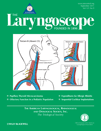Abstract
Background:
Surgical intervention within the area of the middle ear always leads to alteration of conditions in its biomechanical system. This fact may provide an explanation for the lack of expected auditory outcome, although an apparently good anatomic outcome was obtained. In the case of stapedotomy, the majority of patients report lack of satisfactory results for frequencies above 2,000 Hz. The effect has not been experimentally investigated yet.
Methods:
This study, conducted in four human temporal bones, yielded a record of round-window membrane vibration amplitude and phase in the frequency function (400 Hz–10 kHz) at the sound intensity level of 90 dB administered to the external auditory canal in a physiologic condition and following implantation of a Teflon piston stapes prosthesis. The procedure of experimental stapedotomy was performed with the tympanic membrane preserved from the maximally dilated approach through the posterior tympanotomy.
Results:
Stapes Teflon piston prosthesis implantation was found to cause approximately fivefold lower amplitude of round-window membrane vibrations compared to a physiologic situation for frequencies above 2 kHz in particular.
Conclusions:
After stapedotomy, with the use of a Teflon piston prosthesis, stimulation of inner ear structures diminishes, especially in higher frequencies.




